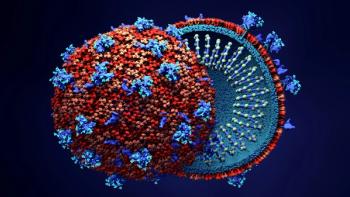
Primary androgen deprivation therapy does not prolong survival in most patients with prostate cancer
Primary androgen deprivation therapy (PADT), the second most common treatment for localized prostate cancer following prostatectomy, is no more effective than conservative medical management for prolonging survival in most older patients with prostate cancer.
Key Points
Primary androgen deprivation therapy (PADT), the second most common treatment for localized prostate cancer following prostatectomy, was no more effective than conservative medical management for prolonging survival in most older patients with prostate cancer, according to a study published in the Journal of the American Medical Association.
PADT therapy involves depriving the prostate gland of gonadal steroids, which are produced mainly in the testicles and stimulate prostate cancer cell growth. The 2 common PADT modalities are surgical castration (orchiectomy) and injection or implantation of luteinizing hormone-releasing hormone (LHRH) agonists such as leuprolide, goserelin, and triptorelin. Continual use of these agents results in reductions in the secretion of luteinizing hormone (LH) and follicle-stimulating hormone (FSH) and in the eventual reduction of testosterone and dihydrotestosterone (DHT) levels to castration-like levels.
Although ADT used as adjunctive therapy along with surgery or radiation therapy has been demonstrated to provide significant mortality benefit (50%–60% relative reductions in risk of death) in patients with prostate cancer who are at high risk for death, few data are currently available regarding the use of ADT alone or as primary therapy.
Consequently, Lu-Yao et al conducted a population-based cohort study of >19,000 Medicare recipients aged ≥66 years (median, 77 y) who had not undergone surgery or radiation therapy for clinical tumor stage T1 or T2 localized prostate cancer. Of these, 7,867 and 11,404 patients, respectively, were either treated with PADT within the first 180 days after diagnosis or were not treated with surgery, radiation, or PADT during this time (conservative management). The median patient follow-up was 81 months.
Seventy-five percent of patients in the cohort receiving PADT continued therapy for ≥18 months; 50% of patients continued therapy for >30 months.
A total of 1,560 deaths from prostate cancer and 11,045 all-cause deaths occurred over the course of the study. PADT was associated with lower 10-year prostate cancer-specific survival compared with conservative management (80.1% vs 82.6%; adjusted HR=1.17; 95% CI, 1.03–1.33) and demonstrated no significant effect on overall 10-year survival compared with conservative management (30.2% vs 30.3%; adjusted HR=1.00; 95% CI, 0.96–1.05).
However, in patients with poorly differentiated disease (prostate cancer cells behaving much less like normal prostate cells), PADT was associated with improved 10-year prostate cancer-specific survival (59.8% vs 54.3%; HR=0.84; 95% CI, 0.70–1.00) but not overall 10-year survival (17.3% vs 15.3%; HR=0.92; 95% CI, 0.84–1.01) compared with conservative management.
In response to these results, the researchers stressed, "The significant adverse effects and costs associated with PADT, along with our finding of a lack of overall survival benefit, suggest that clinicians should carefully consider the rationale for initiating PADT in elderly patients with T1-T2 prostate cancer."
Prostate cancer is one of the most common cancers and is the second most common cause of cancer death among men. Approximately 85% of men with prostate cancer are diagnosed with stage T1 or T2 disease at the time of initial diagnosis.
SOURCES
Lu-Yao GL, Albertsen PC, Moore DF, et al. Survival following primary androgen deprivation therapy among men with localized prostate cancer. JAMA. 2008;300:173–181.
Bolla M, Collette L, Blank L, et al. Long-term results with immediate androgen suppression and external irradiation in patients with locally advanced prostate cancer (an EORTC study): A phase III randomised trial. Lancet. 2002;360:103–106.
Newsletter
Get the latest industry news, event updates, and more from Managed healthcare Executive.

















































